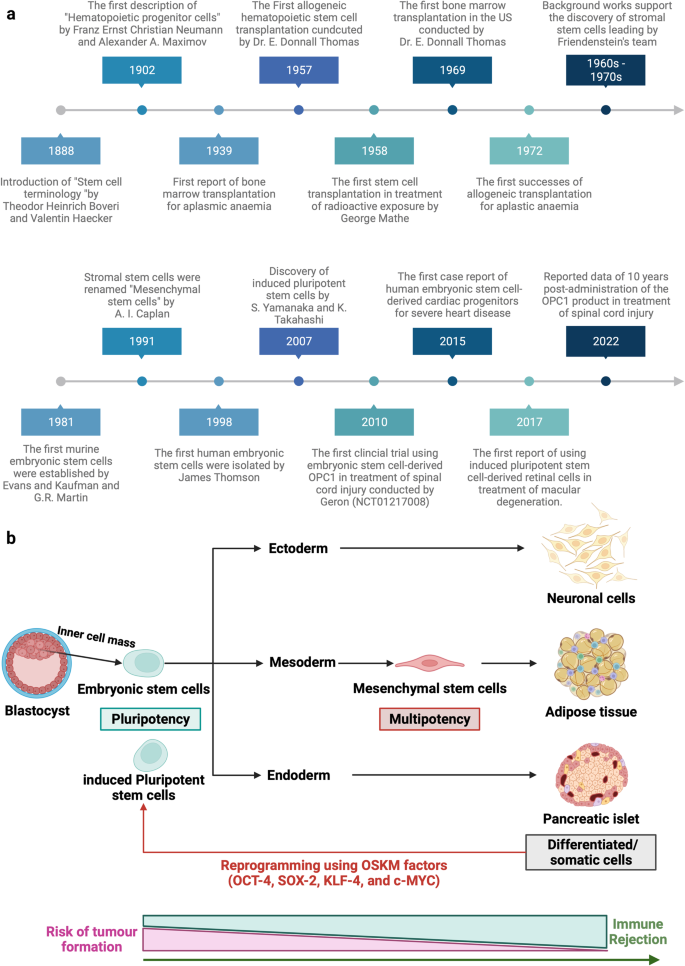Table of Contents

[/image][=video]
[/video]
There are lots of kinds of stem cells. Generally, the term stem cell refers to a classification of cells that generate various other cells (like skin, blood, heart, and muscular tissue cells) by reproducing and differentiating in response to chemical signs. Totipotent stem cells appear at the earliest stage of development and are the only stem cells which can create embryonic stem cells and the placenta.
Bone marrow transplant (BMT) is a special treatment for individuals with particular cancers or other diseases. A bone marrow transplant entails taking cells that are normally discovered in the bone marrow (stem cells), filtering those cells, and providing back either to the benefactor (client) or to one more individual. The goal of BMT is to transfuse healthy and balanced bone marrow cells into a person after his/her own undesirable bone marrow has been treated to kill the unusual cells.
The blood cells that make other blood cells are called stem cells. The most primitive of the stem cells is called the pluripotent stem cell.
It is the stem cells that are needed in bone marrow transplant. The goal of a bone marrow transplant is to cure lots of diseases and types of cancer. When the dosages of chemotherapy or radiation needed to heal a cancer cells are so high that an individual's bone marrow stem cells will be completely damaged or destroyed by the treatment, a bone marrow transplant may be needed.
Medical Group
This procedure is usually called rescue. Change bone marrow with genetically healthy and balanced functioning bone marrow to prevent even more damages from a genetic disease process (such as Hurler's disorder and adrenoleukodystrophy). The dangers and advantages need to be weighed in a detailed discussion with your doctor and professionals in bone marrow transplants prior to the treatment.
There are different kinds of bone marrow transplants depending upon that the benefactor is. The different kinds of BMT include the following: The contributor is the patient himself or herself. Stem cells are extracted from the person either by bone marrow harvest or apheresis (a procedure of collecting peripheral blood stem cells), frozen, and then returned to the individual after intensive treatment.
The benefactor shares the very same genetic type as the individual. Stem cells are taken either by bone marrow harvest or apheresis from a genetically matched donor, usually a brother or sibling. Various other contributors for allogeneic bone marrow transplants may consist of the following: A haploid-identical match is when the contributor is a parent and the genetic suit goes to the very least half the same to the recipient.

Matching includes keying human leukocyte antigen (HLA) cells. The antigens on the surface of these special white blood cells determine the hereditary makeup of a person's immune system. There are at the very least 100 HLA antigens; nevertheless, it is thought that there are a few significant antigens that identify whether a donor and recipient suit.
Medical study is still checking out the function all antigens play in the process of a bone marrow transplant. The more antigens that match, the much better the engraftment of donated marrow. Engraftment of the stem cells occurs when the contributed cells make their way to the marrow and start making brand-new blood cells.
Regenerative Therapy
All people function together to provide the finest possibility for an effective transplant. The team consists of the following: Healthcare companies who specialize in oncology, hematology, immunology, and bone marrow transplant.
Specialists who will help you fulfill your nutritional requirements before and after the transplant. They will function very closely with you and your family members. Professionals who will aid you come to be strong and independent with motion and endurance after the transplantation. Pastors that offer spiritual care and support. Numerous other group participants will certainly examine you prior to hair transplant and will give follow-up care as required.

A full medical history and physical test are carried out, consisting of numerous examinations to evaluate the individual's blood and body organ features (for instance, heart, kidney, liver, and lungs). A person will certainly usually enter the transplant center as much as 10 days prior to transplant for hydration, assessment, positioning of the central venous line, and other preparations.
Blood items and medications will be given through the catheter during therapy. For an allogeneic transplant, a suitable (cells entered and matched) contributor has to be available. Finding a matching donor can be a challenging and prolonged procedure, particularly if a brother or sister suit is not offered. Volunteer marrow benefactors are registered in a number of national and international computer registries.
Donor sources readily available include: self, sibling, moms and dad or family member, nonrelated individual, or umbilical cord from an associated or nonrelated person. There are nationwide and global pc registries for nonrelated individuals and cord blood. Some relative may be keyed in as a result of the need to assist. These loved ones might or may not choose to have their type signed up for use with other receivers.
Stem Cell Therapy local to Madison Heights, Michigan
Examinations connected to his or her health and wellness, direct exposure to infections, and genetic analysis will certainly be done to figure out the level of the suit. The donor will be given instructions on just how a bone marrow contribution will certainly be made. As soon as a suit for an individual requiring a bone marrow transplant is found, after that stem cells will be collected either by a bone marrow harvest.
Or by an outer blood stem cell collection. This is where stem cells are accumulated from the flowing cells in the blood.
Navigation
Latest Posts
Medical Group around Madison Heights
Perimenopause Treatment
Medical Group local to Madison Heights